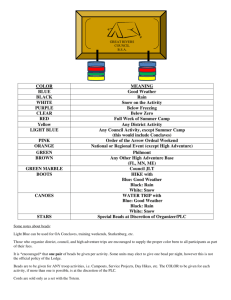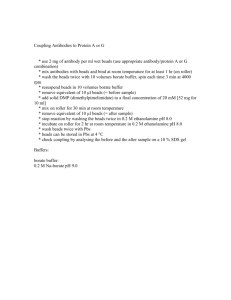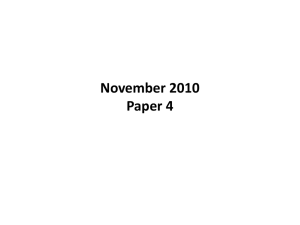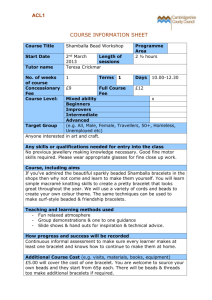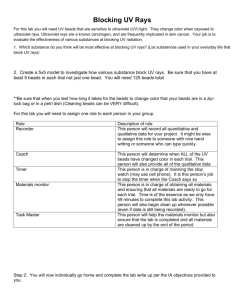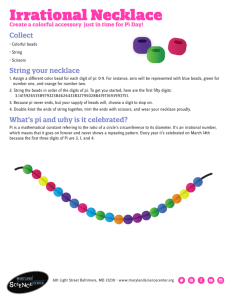File - Mrs. Dawson's Classroom
advertisement
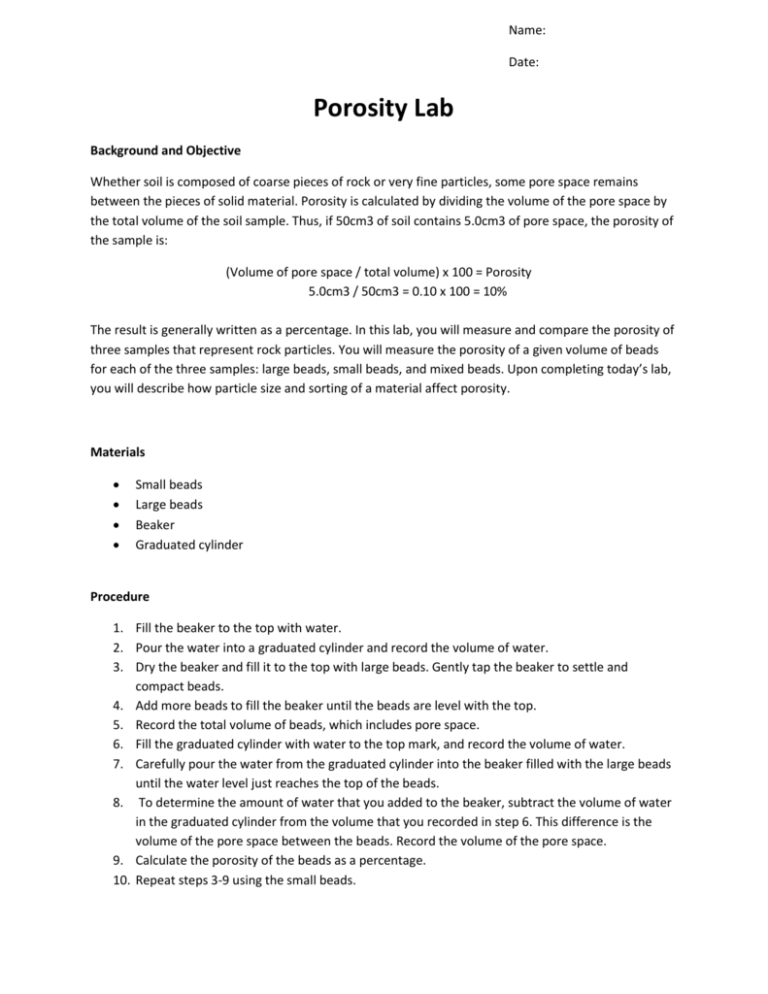
Name: Date: Porosity Lab Background and Objective Whether soil is composed of coarse pieces of rock or very fine particles, some pore space remains between the pieces of solid material. Porosity is calculated by dividing the volume of the pore space by the total volume of the soil sample. Thus, if 50cm3 of soil contains 5.0cm3 of pore space, the porosity of the sample is: (Volume of pore space / total volume) x 100 = Porosity 5.0cm3 / 50cm3 = 0.10 x 100 = 10% The result is generally written as a percentage. In this lab, you will measure and compare the porosity of three samples that represent rock particles. You will measure the porosity of a given volume of beads for each of the three samples: large beads, small beads, and mixed beads. Upon completing today’s lab, you will describe how particle size and sorting of a material affect porosity. Materials Small beads Large beads Beaker Graduated cylinder Procedure 1. Fill the beaker to the top with water. 2. Pour the water into a graduated cylinder and record the volume of water. 3. Dry the beaker and fill it to the top with large beads. Gently tap the beaker to settle and compact beads. 4. Add more beads to fill the beaker until the beads are level with the top. 5. Record the total volume of beads, which includes pore space. 6. Fill the graduated cylinder with water to the top mark, and record the volume of water. 7. Carefully pour the water from the graduated cylinder into the beaker filled with the large beads until the water level just reaches the top of the beads. 8. To determine the amount of water that you added to the beaker, subtract the volume of water in the graduated cylinder from the volume that you recorded in step 6. This difference is the volume of the pore space between the beads. Record the volume of the pore space. 9. Calculate the porosity of the beads as a percentage. 10. Repeat steps 3-9 using the small beads. 11. Drain and dry both sets of beads. Mix together equal volumes of the small and large beads. Using the mixed size beads, repeat steps 3-9. Record Data Total volume of beads The amount of water added (Volume of Pore Space) Porosity of beads (%) Large beads Small beads Mixed beads Conclusion 1. Do the large beads in step 3 represent large sorted large rock particles, well sorted small rock particles or unsorted rock particles? 2. Do the small beads in step 10 represent large sorted large rock particles, well sorted small rock particles or unsorted rock particles? 3. Do the mixed beads in step 11 represent large sorted large rock particles, well sorted small rock particles or unsorted rock particles? 4. In well sorted sediment, does porosity depend on particle size? 5. How did mixing the beads affect porosity?

